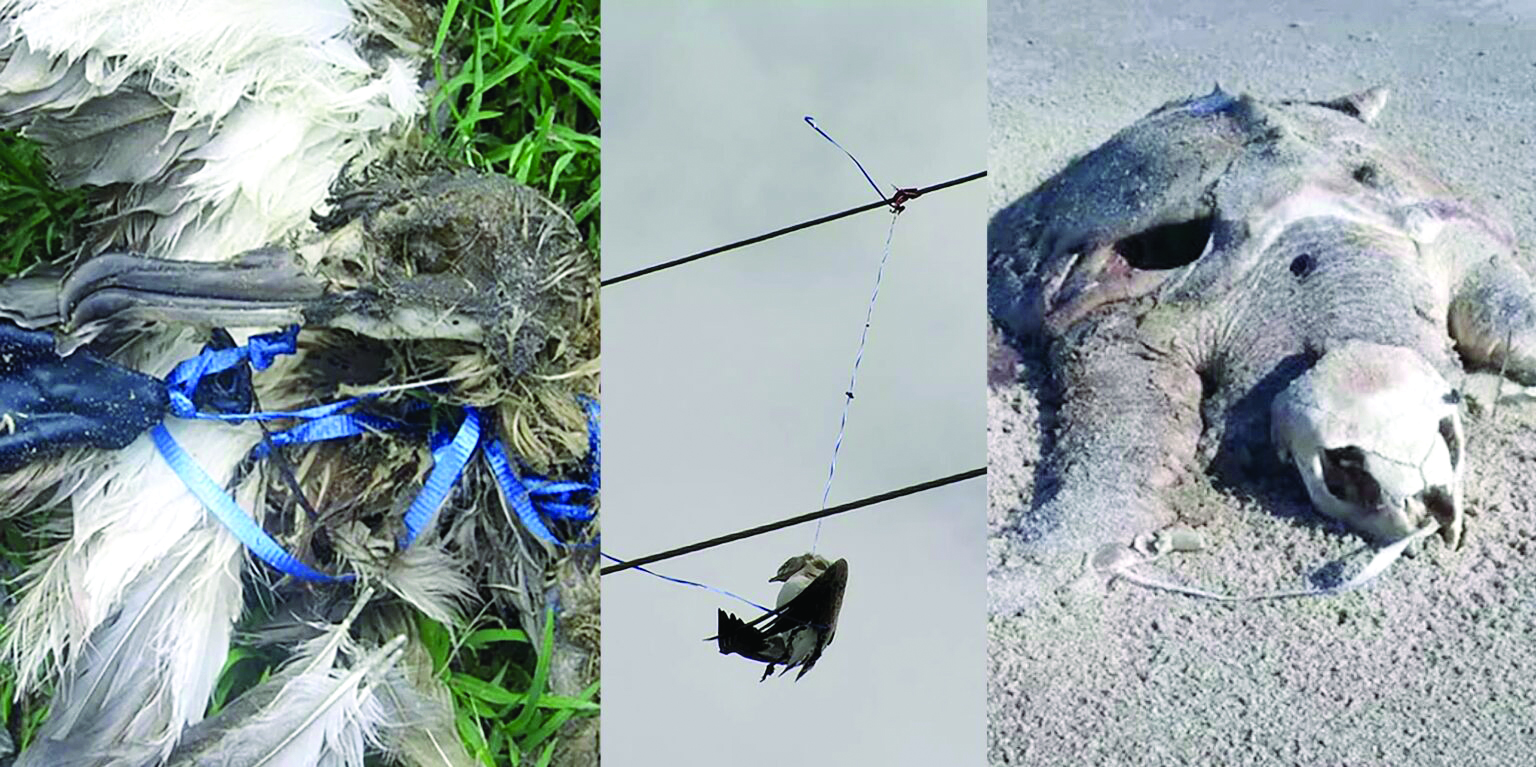Creature Chronicles: Deadly Consequences
I can remember as a child when my teacher brought helium balloons to class and gave one to each child. She explained that we were going to write notes, attach them to the strings and release them. We were all hoping that someone would then find our notes and contact us. It would be so much fun to see how far our balloons traveled. Sadly, no one responded. Now, decades later, I have learned just how hazardous to animals those balloons were.
At least once a month, I hear of or see on the news people releasing balloons in remembrance of a lost loved one or in celebration of a special day or event. We know that those who organize and participate in balloon releases have the best intentions but they don’t consider the consequences of their actions. As you know, what goes up must come down and those balloons turn into unsightly litter. They can be found along beaches, in rivers, lakes, and oceans, as well as in forests, farmland, and other green spaces. You can see them wrapped around power lines, in trees and even in yards.
In addition to being unsightly litter, balloons are extremely hazardous to domestic animals and wildlife. The National Oceanic and Atmospheric Administration (NOAA) states that animals often believe the balloon pieces are food.
“Balloons that are released into the air don’t just go away, they either get snagged on something such as tree branches or electrical wires, deflate and make their way back down, or rise until they pop and fall back to Earth where they can create a lot of problems. Many balloons that are not properly disposed of end up in the ocean and along shores, becoming marine debris…Balloons can be mistaken for food, and if eaten and ingested, balloons and other marine debris can lead to loss of nutrition, internal injury, starvation, and death.”
The latex or mylar gets lodged in the digestive tract and the animal can no longer eat. It’s a slow, painful death by starvation. The strings or ribbons attached to the balloons are just as deadly. Birds can get them wrapped around their necks, beaks or feet. Again, it’s a slow and painful death. So many animals have been killed–marine species like dolphins, whales, and turtles; cows and sheep; pet dogs; ducks and geese.
The U.S Fish and Wildlife Service and local chapters of the National Audubon Society are urging people to stop releasing balloons and to find alternatives that are safer for animals and our planet. Several states and cities in the U.S and abroad have passed laws regarding mass balloon releases. The following ten states have laws banning or limiting the release of balloons: California, Connecticut, Delaware, Florida, Hawaii, Maine, Maryland, Rhode Island, Tennessee, and Virginia.
More than 270 scientists and other experts rated balloons as one of the major threats to marine mammals, seabirds, and turtles. During an examination of more than 1,700 deceased seabirds, researchers at the University of Tasmania found nearly one in five died from ingesting a balloon or balloon pieces. Soft plastics represented just five percent of the debris ingested but caused 40 percent of deaths. In an effort to convince people to stop releasing balloons, the U.S. Fish and Wildlife Service has even posted disturbing images of dead wildlife on their website.

What can you do instead of releasing balloons?
1. I’ve seen many families and organizations plant trees in honor of someone. This gives you a chance to honor that person year after year as you watch the tree grow.
2. Blow bubbles. You can make an eco- friendly bubble solution with dish soap.
3. Throw flower petals.
4. Hold a beautiful candlelight vigil.
5. Have a bonfire.
6. Fly kites.
Get creative. Come up with some other ways to honor/celebrate. Be responsible and think about your actions. No one wants to cause harm to animals or our environment.















